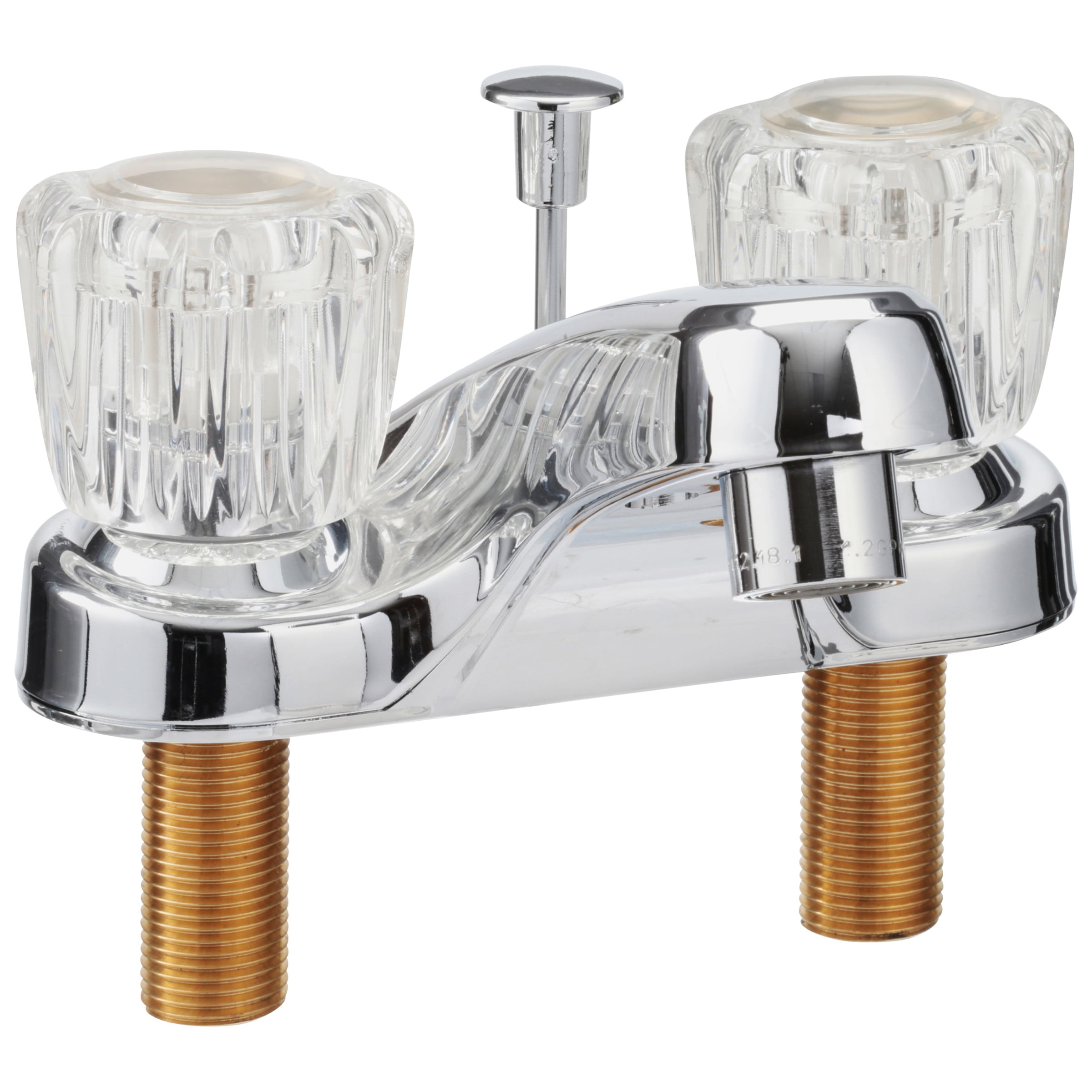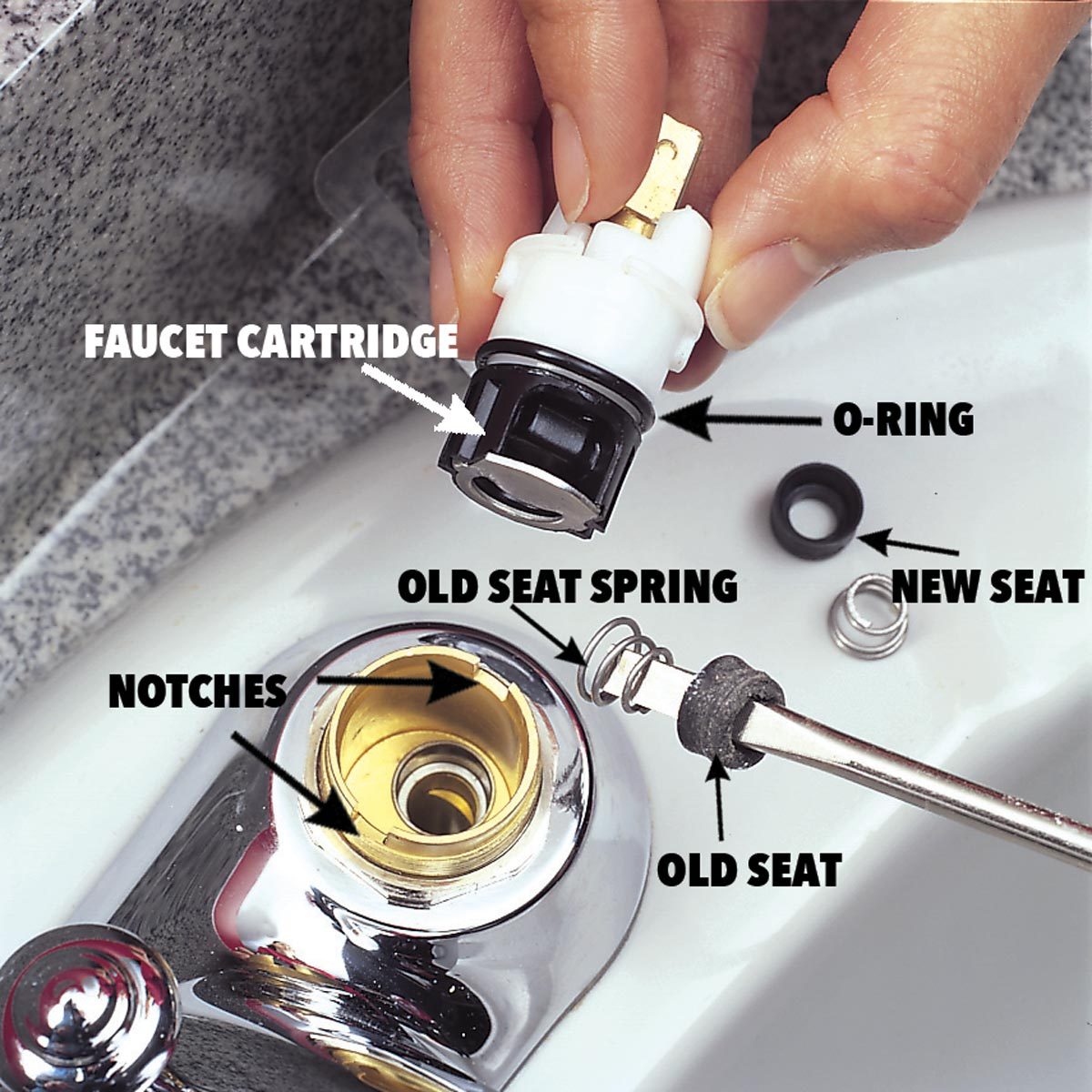Delta Two Handle Bathroom Faucet Parts Overview

Delta two-handle bathroom faucets are a popular choice for homeowners due to their durability, reliability, and stylish designs. They offer a wide range of options to suit various bathroom styles and preferences. Understanding the different parts of these faucets is crucial for maintenance, repair, and replacement.
Types of Delta Two Handle Bathroom Faucets
Delta offers a diverse range of two-handle bathroom faucets, each with unique features and functionalities. Some common types include:
- Centerset Faucets: These faucets have a standard 4-inch center-to-center spacing between the handles. They are widely compatible with most bathroom sinks and offer a classic look.
- Widespread Faucets: With a greater handle spacing of 8-16 inches, widespread faucets provide a more contemporary aesthetic and allow for easier access to the handles.
- Roman Tub Faucets: Designed specifically for soaking tubs, these faucets feature a distinct design with tall, elegant spouts and separate handles for hot and cold water control.
- Wall-Mount Faucets: These faucets are mounted directly to the wall, eliminating the need for a deck plate. They offer a clean and modern look, ideal for contemporary bathroom designs.
Common Delta Two Handle Bathroom Faucet Parts
Delta two-handle bathroom faucets consist of various components that work together to deliver water and control its flow.
- Handles: These are the primary control elements for regulating water flow and temperature. Delta handles are typically made of metal, such as brass or stainless steel, and can be finished in various styles to match the overall faucet design.
- Cartridges: Located inside the handles, cartridges are the heart of the faucet. They contain internal mechanisms that control water flow and temperature. Delta cartridges are available in different designs, including ceramic disc cartridges, which are known for their durability and smooth operation.
- Spout: The spout is the part of the faucet that delivers water. Delta spouts come in various shapes, sizes, and finishes to complement different bathroom styles. They are typically made of metal, often brass, and are designed to resist corrosion and wear.
- Aerator: Attached to the spout, the aerator mixes air with water to create a smooth, even flow. This reduces splashing and helps conserve water.
- Supply Lines: These flexible hoses connect the faucet to the hot and cold water supply lines. Delta supply lines are typically made of braided stainless steel, which provides durability and flexibility.
- Deck Plate: This circular plate is used to cover the holes in the countertop or sink where the faucet is installed. Deck plates come in various sizes and finishes to match the faucet design.
- Escutcheon: This decorative plate covers the holes in the wall where the faucet is mounted for wall-mounted faucets. Like deck plates, escutcheons come in various sizes and finishes.
Importance of Knowing the Model Number, Delta two handle bathroom faucet parts
Each Delta two-handle bathroom faucet has a unique model number that identifies its specific design and features. Knowing the model number is crucial for:
- Accurate Part Identification: Every part of a Delta faucet is designed specifically for its corresponding model. Using the correct part ensures proper fit and function.
- Ordering Replacement Parts: When ordering replacement parts, providing the model number ensures that you receive the correct components for your faucet.
- Troubleshooting and Repair: Many Delta faucet manuals and online resources use model numbers to provide specific instructions for troubleshooting and repair.
Common Delta Two Handle Bathroom Faucet Parts and Their Functions

Understanding the common parts of a Delta two-handle bathroom faucet and their functions is essential for maintaining and repairing the faucet. This knowledge empowers you to identify worn or damaged parts, facilitating efficient troubleshooting and replacement.
Common Delta Two Handle Bathroom Faucet Parts and Their Functions
The table below provides a detailed overview of common Delta two-handle bathroom faucet parts, their functions, materials, and typical issues:
| Part Name | Function | Material | Typical Issues |
|---|---|---|---|
| Cartridge | Controls water flow and temperature | Ceramic, metal, or plastic | Leaking, difficulty in controlling water flow, temperature fluctuations |
| Handles | Operate the cartridge to control water flow and temperature | Metal, plastic, or ceramic | Loose, worn, or broken handles, difficulty in turning |
| Stems | Connect the handles to the cartridge | Metal | Worn or damaged stems, causing loose or difficult handle operation |
| Aerator | Reduces water pressure and adds air to the water stream, creating a smoother flow | Metal or plastic | Clogged or damaged aerator, resulting in a weak or uneven water flow |
| Supply Lines | Connect the faucet to the water supply | Copper, braided stainless steel, or PEX | Leaks, corrosion, or damage to the supply lines |
Importance of Using Genuine Delta Replacement Parts
Using genuine Delta replacement parts is crucial for ensuring optimal performance and longevity of your Delta two-handle bathroom faucet. These parts are specifically designed and manufactured to meet the exact specifications of the faucet, guaranteeing a perfect fit and seamless operation.
Potential Risks of Using Non-OEM Parts
Using non-OEM (Original Equipment Manufacturer) parts can lead to various issues, including:
* Compatibility issues: Non-OEM parts may not be compatible with your Delta faucet, resulting in improper fit, leaks, or malfunctions.
* Warranty voidance: Using non-OEM parts can void your faucet’s warranty, leaving you responsible for any repair costs.
* Reduced performance: Non-OEM parts may not be manufactured to the same high standards as genuine Delta parts, leading to reduced performance, durability, and lifespan.
Using genuine Delta replacement parts ensures a perfect fit, optimal performance, and a longer lifespan for your Delta two-handle bathroom faucet.
Troubleshooting and Repairing Delta Two Handle Bathroom Faucets

Delta two-handle bathroom faucets are known for their durability and reliability, but even the most robust fixtures can experience issues over time. Understanding common problems and troubleshooting techniques can help you resolve most issues without the need for a professional plumber.
Identifying Common Issues
Common problems with Delta two-handle bathroom faucets can be categorized into three main areas: leaks, drips, and low water pressure.
- Leaks: Leaks can occur at the base of the faucet, from the spout, or around the handles. This often indicates worn-out O-rings, washers, or cartridge seals.
- Drips: Dripping faucets are often caused by worn-out washers, O-rings, or cartridge seals. A dripping faucet can waste a significant amount of water over time, increasing your water bill and potentially causing damage to your sink.
- Low Water Pressure: Low water pressure can be caused by a number of factors, including mineral buildup in the faucet aerator, a clogged faucet cartridge, or a problem with the water supply line.
Troubleshooting and Repairing Leaks
Leaks in Delta two-handle bathroom faucets can be traced back to several potential sources:
- Base of the Faucet: If the leak is at the base of the faucet, it could be caused by a worn-out O-ring or a loose connection.
- Spout: A leak from the spout usually indicates a worn-out O-ring or a loose connection between the spout and the faucet body.
- Handles: Leaks around the handles often signify worn-out O-rings or cartridge seals.
Step-by-Step Guide to Troubleshooting Leaks
- Turn off the water supply: Locate the shut-off valves for the hot and cold water lines supplying the faucet and turn them off.
- Inspect the base of the faucet: Look for signs of leaks or loose connections. If you find a leak, tighten the connection or replace the O-ring.
- Inspect the spout: Check for leaks around the spout and tighten the connection if necessary. If the leak persists, replace the O-ring.
- Inspect the handles: Look for leaks around the handles and tighten the handle screws if loose. If the leak persists, replace the O-rings or cartridge seals.
- Turn the water supply back on: After making repairs, turn the water supply back on and test for leaks.
Troubleshooting and Repairing Drips
Dripping faucets are a common issue, and they can be easily repaired with a few simple steps.
Step-by-Step Guide to Troubleshooting Drips
- Turn off the water supply: Locate the shut-off valves for the hot and cold water lines supplying the faucet and turn them off.
- Remove the handle: Depending on the faucet model, you may need to remove a decorative cap or screw before removing the handle.
- Inspect the cartridge or washer: Depending on the faucet model, there may be a cartridge or a washer that needs to be replaced.
- Replace the cartridge or washer: If the cartridge or washer is worn out, replace it with a new one.
- Reassemble the faucet: Reinstall the handle and any decorative caps or screws.
- Turn the water supply back on: After making repairs, turn the water supply back on and test for drips.
Troubleshooting and Repairing Low Water Pressure
Low water pressure can be frustrating, but it’s often an easy problem to fix. Here’s a step-by-step guide to troubleshoot and repair low water pressure in Delta two-handle bathroom faucets:
Step-by-Step Guide to Troubleshooting Low Water Pressure
- Check the faucet aerator: The aerator is a small screen at the end of the spout that mixes air with water to create a smooth stream. Mineral buildup in the aerator can restrict water flow. Remove the aerator and clean it with a toothbrush and vinegar.
- Inspect the faucet cartridge: If the water pressure is still low, the faucet cartridge may be clogged. Remove the cartridge and clean it with a toothbrush and vinegar. If the cartridge is damaged, replace it with a new one.
- Check the water supply line: If the problem is not with the faucet itself, there may be a problem with the water supply line. Make sure the shut-off valves are fully open and that there are no kinks or obstructions in the water supply line.
Maintaining Your Delta Two Handle Bathroom Faucet
Regular maintenance can help extend the lifespan of your Delta two-handle bathroom faucet.
- Clean the faucet regularly: Wipe down the faucet with a damp cloth to remove dirt and grime.
- Clean the aerator: Remove the aerator and clean it with a toothbrush and vinegar to remove mineral buildup.
- Lubricate the handles: Apply a small amount of silicone lubricant to the handle stems to keep them moving smoothly.
- Check for leaks: Regularly check for leaks around the base of the faucet, the spout, and the handles.
Just as the intricate workings of a Delta two handle bathroom faucet parts control the flow of water, so too do our inner mechanisms guide our life’s journey. Perhaps the elegance of a pfister brea bathroom faucet inspires us to seek similar refinement in our own being.
Understanding the delicate balance of each component in the Delta faucet, we can gain insight into the interconnectedness of all things, and find a harmonious flow within ourselves.
Just as the intricate gears within a Delta two handle bathroom faucet work in harmony to deliver a precise flow of water, so too does the soul seek balance and purpose. The peerless apex bathroom faucet , with its elegant design and reliable functionality, reminds us that even the simplest of objects can inspire a sense of grace and order.
Like the Delta faucet, our lives are a symphony of interconnected parts, each contributing to the grand whole, and it is through mindful awareness that we can truly appreciate the beauty and complexity of our existence.
